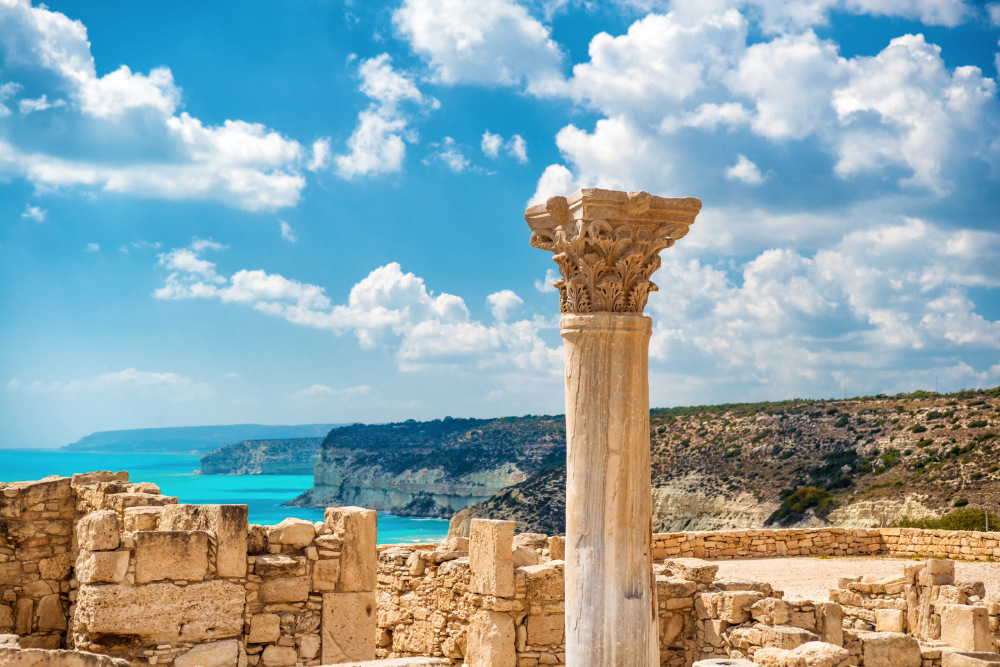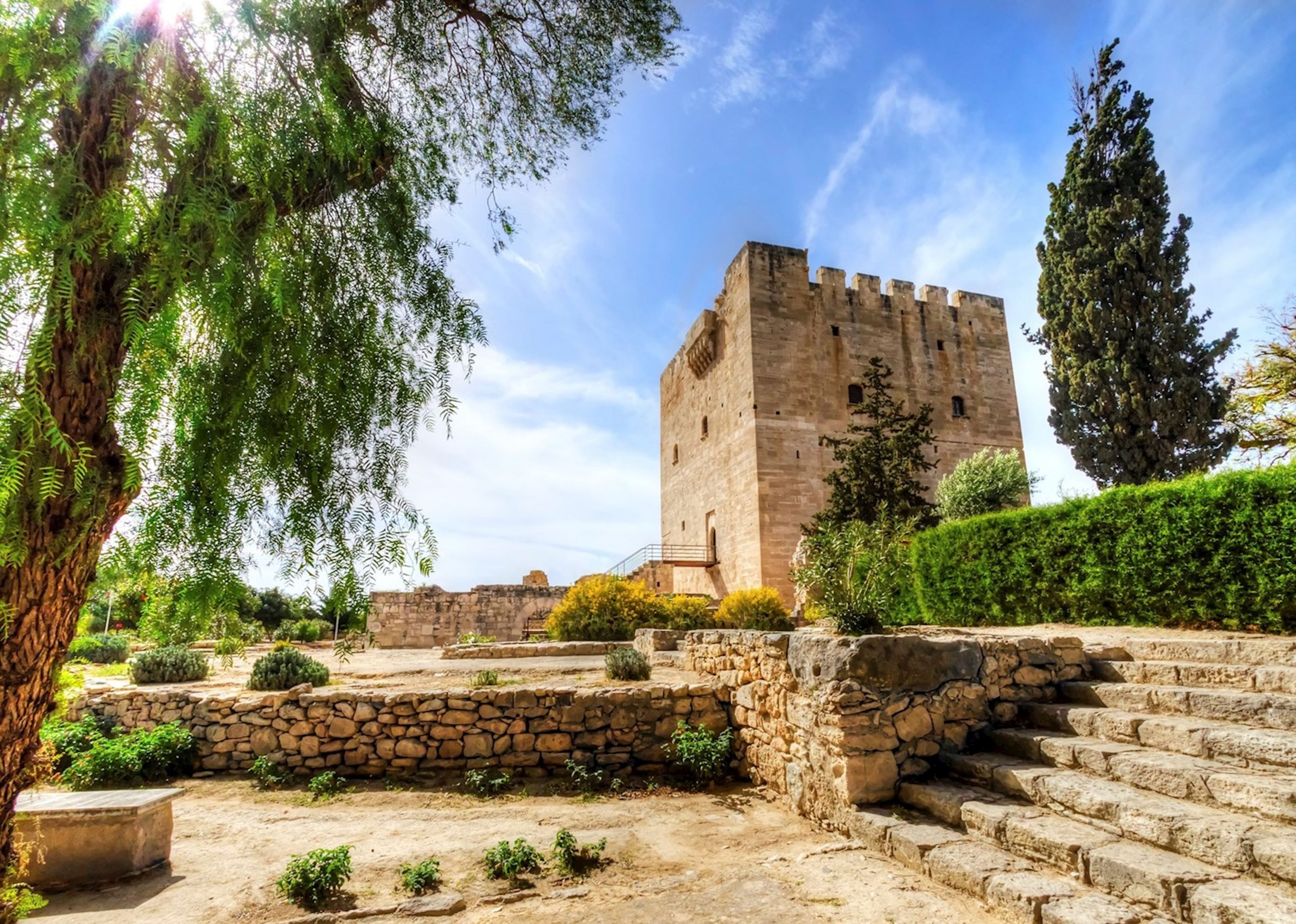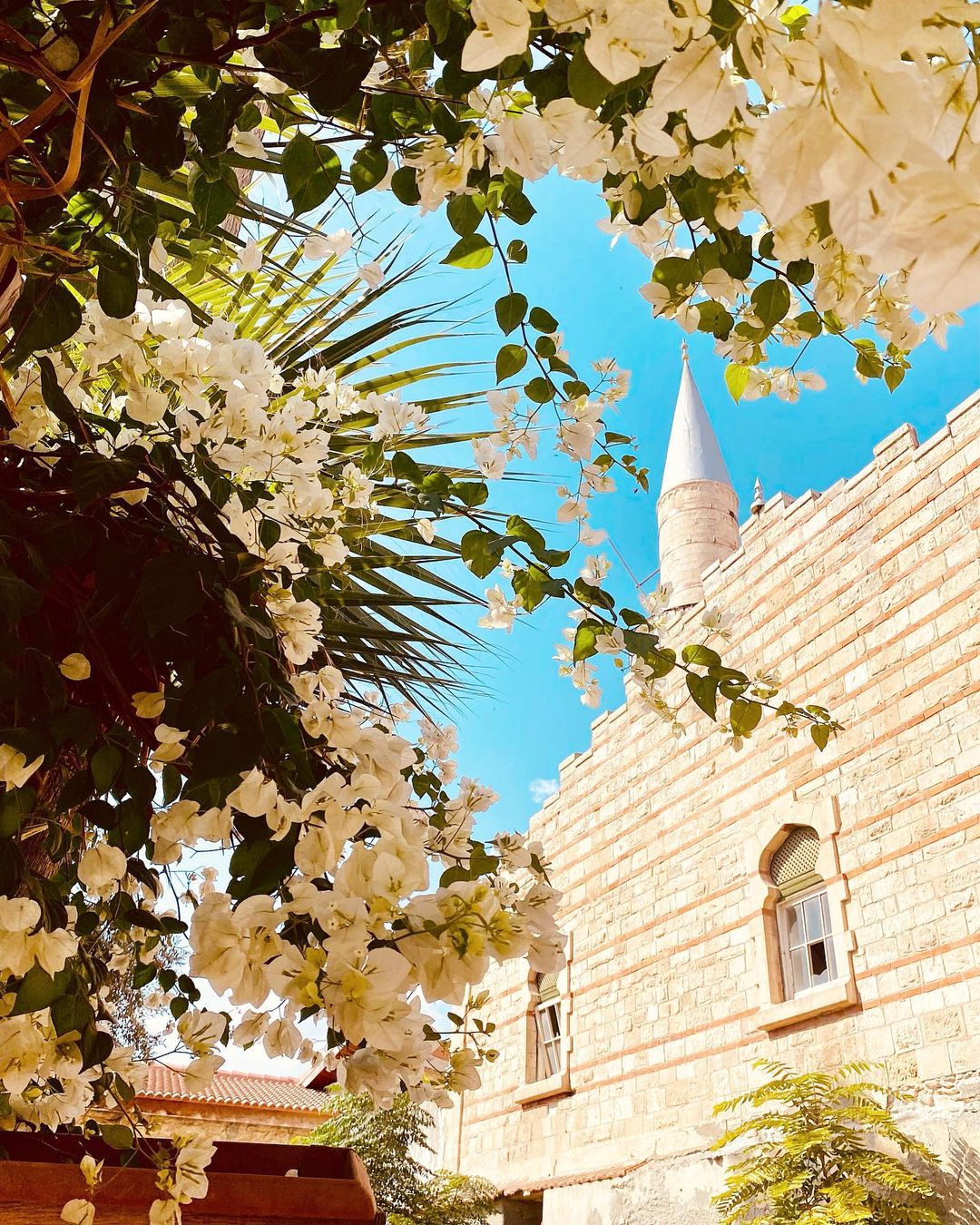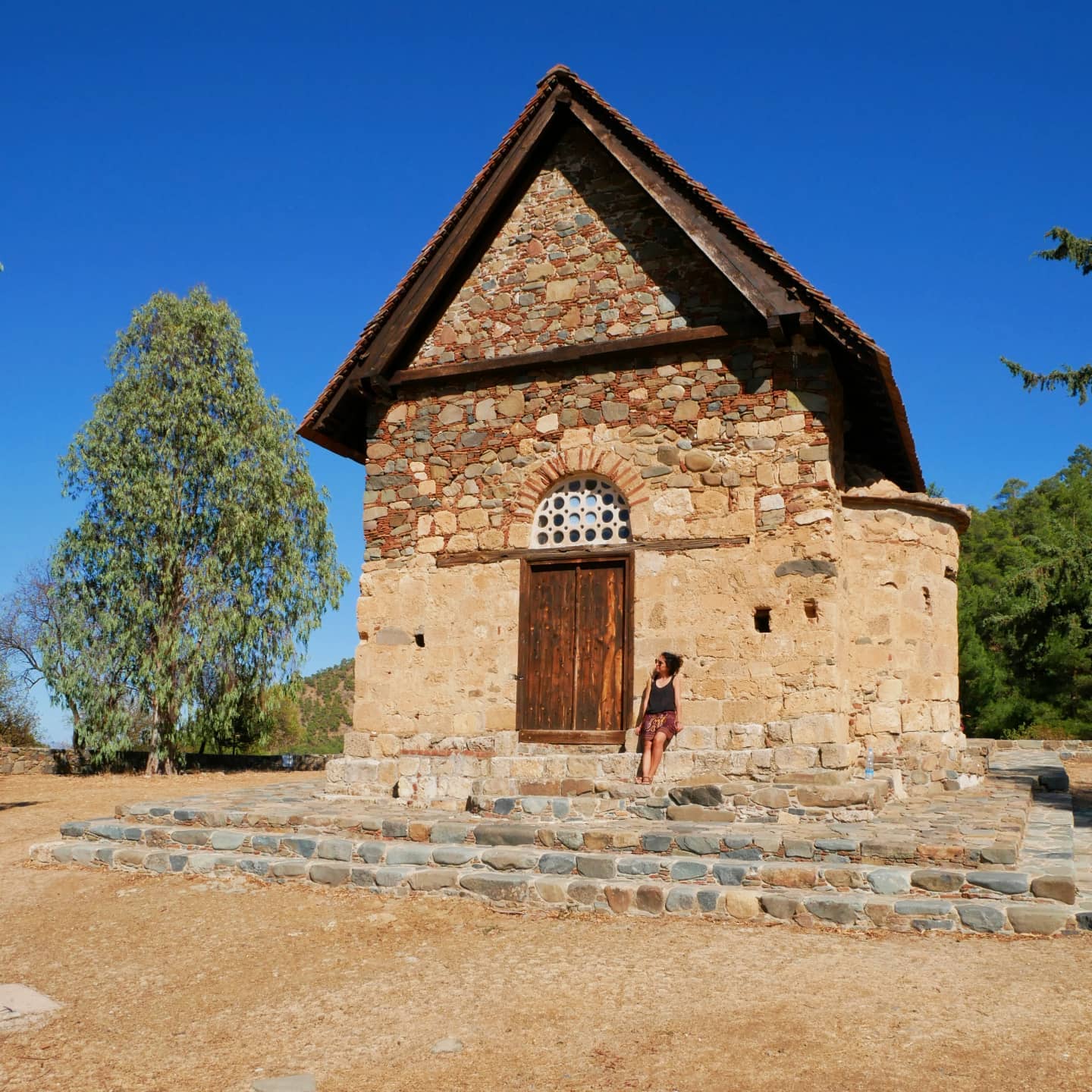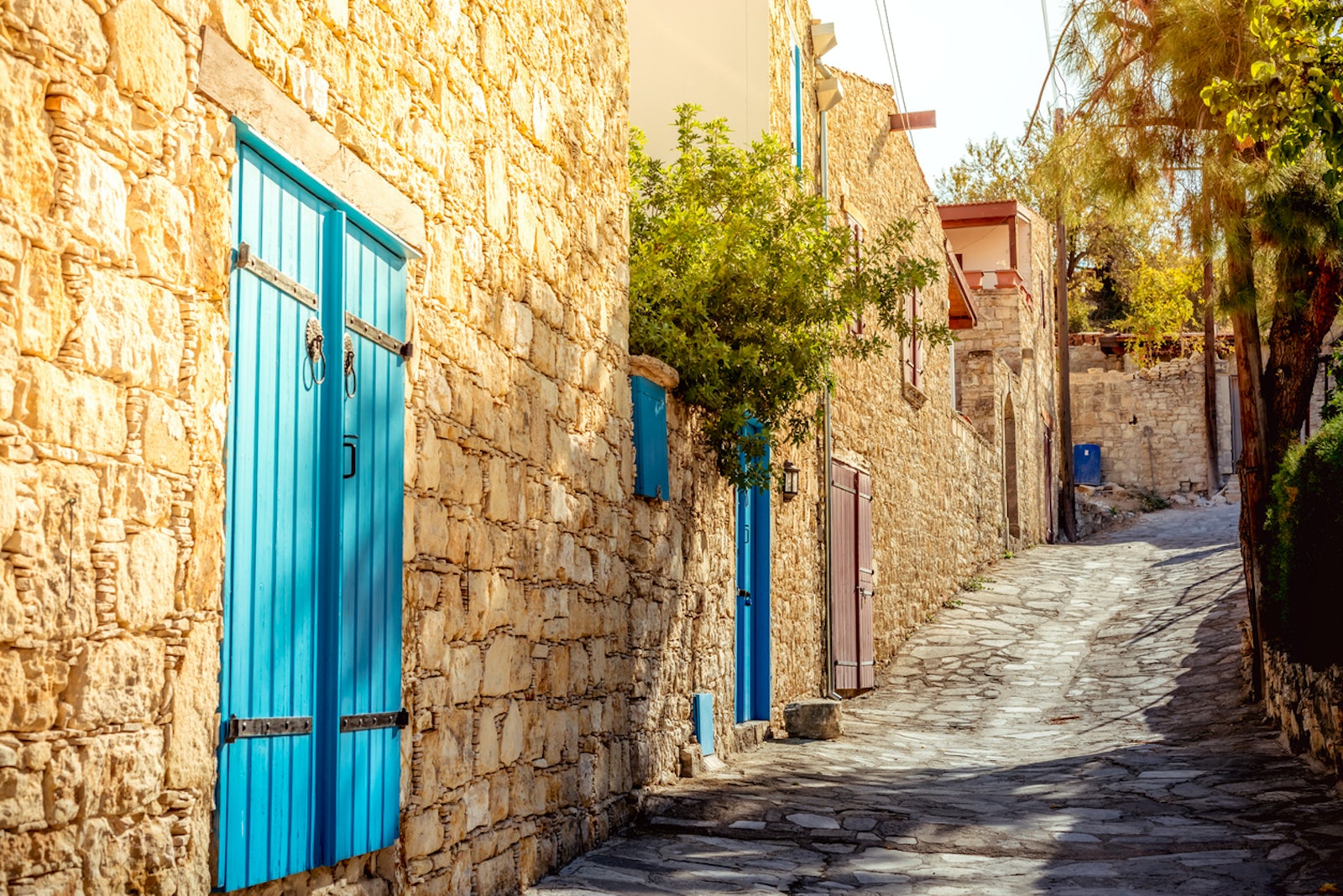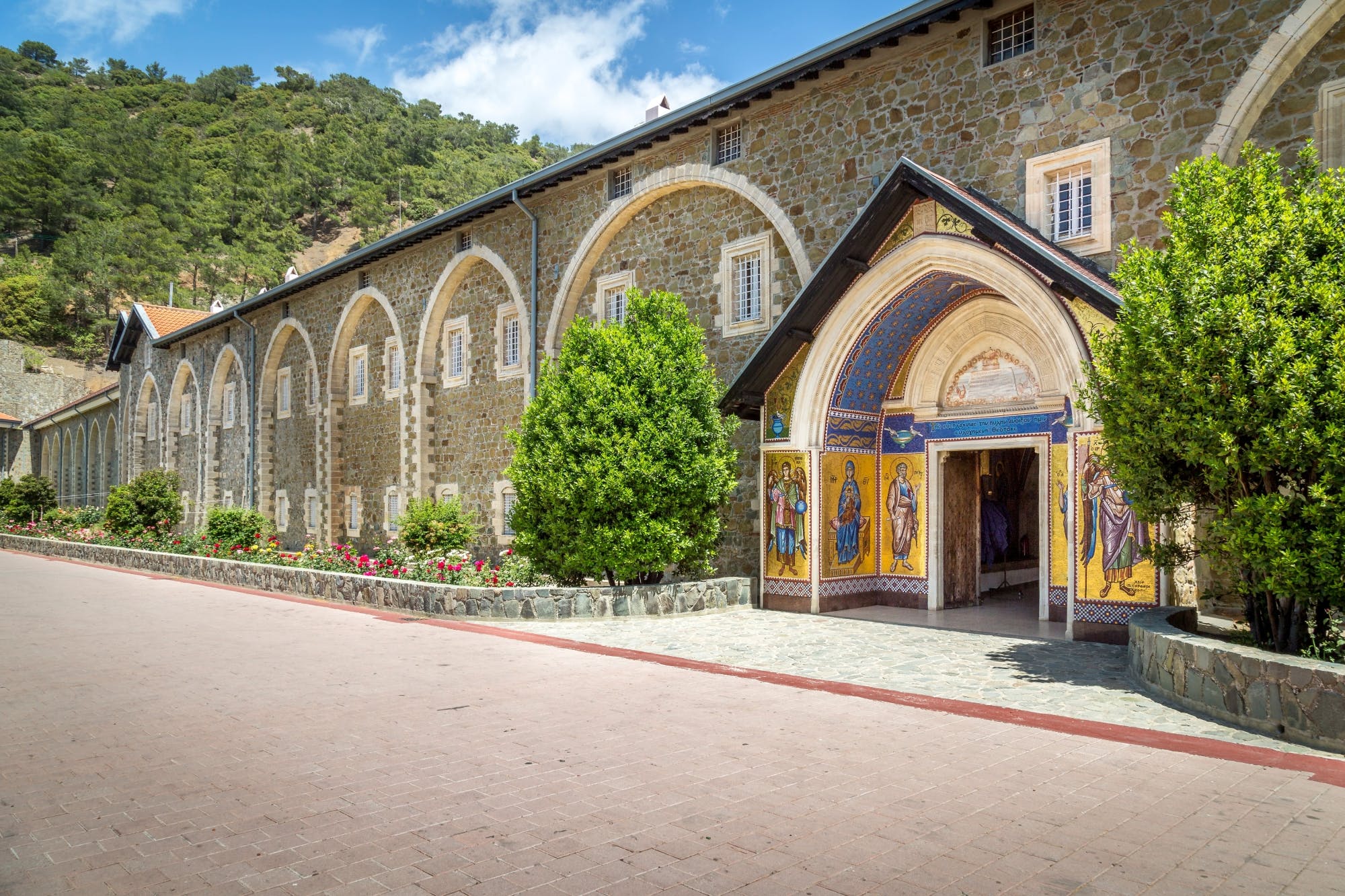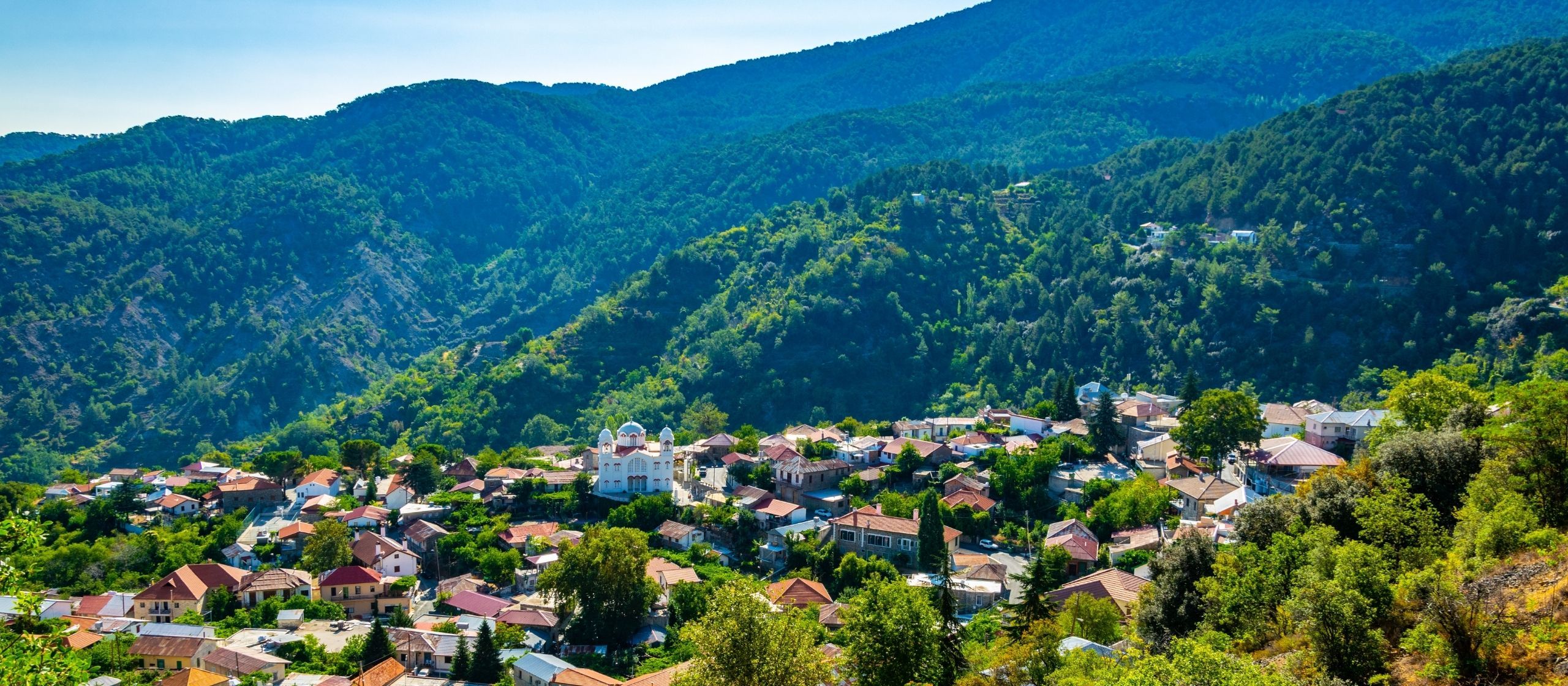15 Best Things to Do in Limassol
Located on the beautiful Mediterranean island of Cyprus, Limassol (also known as Lemesos) is a shoreline city that sweeps along a broad stretch of beach. As the cosmopolitan hub of the island, it effortlessly blends modern beach-focused tourism and café culture with its ancient past.
Here, you can explore the tourist attractions and beaches of the Akrotiri Peninsula, take sightseeing road trips to the gorgeous mountain villages, and even visit Ancient Kourion, Cyprus’ most famous historic site.
✅ Make sure you’ll see the entire collection in Framey App, including addresses, opening hours, and contact information!
1) Go to Limassol’s Beaches
Limassol has plenty of beaches to choose from, each with its own unique charm. One of the most popular local beaches is Lady’s Mile Beach, an eight-kilometer stretch of sandy paradise located 13 kilometers southwest of Limassol. What makes this beach particularly interesting is the landscape of the salt lake running behind the shore.
If you’re looking for a dose of culture with your sunbathing, head to Kourion Beach, which is 17 kilometers west of Limassol. This beach is located below the mighty ruins of Ancient Kourion and boasts a wide sweep of golden-beige sand backed by cliffs, as well as the remains of a 6th-century basilica nearby.
Another great beach to check out is Avdimou Beach, which is located 27 kilometers west of Limassol. This long beach features a sandy shore, pleasant swimming, and a small café and jetty at the eastern end.
For those looking for a quaint beach village experience, Pissouri Village is the perfect spot. Located just 10 kilometers west of Avdimou, Pissouri village boasts an enticing beach with a pleasant stretch of sand, and the village itself sits atop a cliff with plenty of pretty cafés and boutiques to visit.
Whether you’re looking to relax on the beach all day or take a dip in the water after a day of exploring Limassol, the city’s beaches are a must-visit during your stay.
2) Be amazed by Ancient Kourion – 15 Best Things to Do in Limassol
For history buffs and archaeology enthusiasts, a visit to Ancient Kourion is a must-do in Limassol. One of Cyprus’ top tourist attractions, Ancient Kourion is a spectacular archaeological site that offers a glimpse into the region’s ancient history and culture.
Located 18 kilometers west of central Limassol, Ancient Kourion was once a city-kingdom that flourished during the Hellenistic, Roman, and Byzantine eras. Today, visitors can explore the well-preserved ruins of the city’s public and private buildings, including a theater, a forum, and a bathhouse.
Mosaic fans will find Ancient Kourion’s House of Eustolios particularly interesting.
Don’t miss the mosaic of Achilles disguised as a woman, as well as the famous four-panel mosaic depicting a partridge and the god Ktisis.
Further along the cliff edge, you’ll find the ruins of a 5th-century Byzantine basilica, a Roman Nymphaeum (decorated fountain), and extensive public bath remnants. A short path leads to the small House of the Gladiators, named after the mosaics of gladiator combat still in-situ on the floor.
After exploring the site, head to the nearby village of Episkopi, just two kilometers northeast, to visit the Kourion Museum. The collection here includes a wealth of smaller artifacts unearthed from both Kourion and the Sanctuary of Apollo.
Overall, Ancient Kourion is an incredible attraction that offers visitors a glimpse into the region’s ancient past. Whether you’re a history buff or just looking for a unique and fascinating experience, Ancient Kourion is not to be missed on your trip to Limassol.
3) Go to Kolossi Castle
For history and architecture enthusiasts, a visit to Kolossi Castle is a must when in Limassol. Built in 1210 CE by the Knights of St. John, this castle is an excellent example of military architecture and served as the Grand Command center of Jerusalem’s Order of St. John until the 14th century.
Located just 10 kilometers west of central Limassol, Kolossi Castle is easily accessible and is one of the best places to visit on the road between Limassol and Ancient Kourion. As you enter the castle across a tiny drawbridge, you are welcomed into a large chamber adorned with a decently-preserved fresco depicting Jesus’ crucifixion on the main entrance wall.
A narrow spiral staircase leads you up to the second level with two stone-cut chambers, and then onto the battlemented roof with excellent views across Kolossi village below. Besides the main castle building are the ruins of a medieval factory where the knights processed sugar cane, adding an interesting layer of history to the visit.
Although Kolossi Castle may be small, it is mighty in its historical significance and offers a fascinating glimpse into medieval Cyprus. Don’t forget to take in the panoramic views of the village and the surrounding landscape from the roof.
4) Don’t miss the Attractions of Limassol Old Town – 15 Best Things to Do in Limassol
15 Best Things to Do in Limassol
If you’re looking for an authentic and vibrant experience in Limassol, look no further than the old town district. This charming part of the city offers a variety of historical and modern attractions that will captivate and entertain visitors.
At the heart of the district lies Limassol Castle, one of the top tourist attractions in the city. Built in the 14th century on the site of a Byzantine fortress, the castle has a fascinating history that includes hosting Richard the Lionheart’s marriage to Berengaria and serving as a military base for the Ottomans. Today, the castle’s interior houses the Limassol Medieval Museum, which displays an impressive collection of armor, weapons, religious artifacts, and tombstones.
Just outside the castle, the main square bustles with energy and offers a selection of cozy cafes and restaurants where visitors can grab a bite or sip on a refreshing drink. This is also where you can find the Lanitis Art Foundation, a modern art museum housed in an old Carob Mill that showcases a variety of rotating exhibits.
As you continue your exploration of the old town district, be sure to make a stop at the Limassol Cathedral, a grand and impressive Baroque structure. Nearby, tucked away down a narrow alley, you’ll discover the small and picturesque Grand Mosque, surrounded by towering palm trees.
From history and culture to modern art and dining, Limassol’s old town district offers a wealth of experiences for visitors to enjoy. Make sure to add it to your itinerary when visiting the city!
5) Admire the Sunset at Aphrodite’s Rock (Petra tou Romiou)
No trip to Limassol would be complete without a visit to one of the island’s most magical spots: Aphrodite’s Rock (Petra tou Romiou). This stunning location is steeped in mythology and local lore, with the belief that it is the spot where the goddess Aphrodite emerged from the waves.
The Greek name of the rock, “Petra tou Romiou,” is associated with the legendary Byzantine frontier guard Digenis Akritas. According to the tales, he kept Arab pirates at bay by throwing rocks at them from the hillside above.
Aphrodite’s Rock is characterized by two large rocks that jut out into the sea, creating a picturesque beachscape that has been the source of inspiration for many poets and painters. One of the most famous examples of art inspired by this location is Botticelli’s Birth of Venus painting in Florence.
Although the actual beach is shingle rather than sand, it is a top picnicking haunt and a must-stop for anyone driving along the coastline between Limassol and Paphos. The setting is truly breathtaking, particularly at sunset when the sky turns a fiery shade of red, making for an unforgettable experience.
So, don’t miss the chance to visit this magical place and see for yourself why it’s considered one of the top attractions in Limassol. You can find Aphrodite’s Rock on the main coastal highway, 43 kilometers west of Limassol.
6) Explore the Troodos Mountain Churches – 15 Best Things to Do in Limassol
15 Best Things to Do in Limassol
If you’re interested in exploring some of the best-preserved frescoes of Cyprus’ Troodos Mountain churches, a day trip to the Solea Valley is a must. The stone chapels scattered along the forested slopes may be small and unassuming, but their interiors boast vibrant Byzantine-era art that is sure to impress.
One of the most important UNESCO World Heritage-listed churches in the area is the Panagia Asinou, situated near Nikitari Village. This church features a kaleidoscope of colorful frescoes depicting saints and Biblical scenes, some of which date back to the 12th century.
Another notable church to visit is the Panagia Podithou, located just north of Kakopetria village. Originally built as part of a 16th-century monastery, its 16th- and 17th-century frescoes are examples of the Italo-Byzantine style, heavily influenced by the Italian Renaissance.
Since you’ll need your transportation to reach the churches, this option is ideal for a self-drive tour. Don’t miss the chance to explore Kakopetria, the Solea Valley’s main village, which offers plenty of lunch options for hungry travelers.
Take in the rich history and stunning artistry of Cyprus’ Troodos Mountain churches on a memorable road trip through the beautiful Solea Valley.
7) Don’t miss the beautiful Alleys of Lofou Village
When visiting Limassol, be sure to take a day trip to the charming village of Lofou. With its winding cobblestone alleyways and traditional houses made of limestone and red-tiled roofs, Lofou is a snapshot of old-school Cypriot life.
As you stroll through the village, take in the sights and sounds of everyday life. Watch old ladies gossip on their doorsteps while knitting, and see goats rummaging through back alleys filled with colorful baskets of flowers. You’ll feel like you’ve stepped back in time to a simpler era.
Don’t miss the Church of Panagia Chrysolofitissa, which dominates the western side of the village. Legend has it that local shepherds saw a light emanating from this spot while grazing their flock, and upon investigating, found an icon of the Virgin Mary. They built the church on this site to honor her, and it’s been a beloved local landmark ever since.
Inside, the church boasts beautiful frescoes depicting the lives of various saints, as well as a particularly stunning mezzanine floor. If you’re interested in history and art, you won’t want to miss it.
Lofou is located 28 kilometers northwest of central Limassol, and public transport into the Mandaria region is very limited. To get the most out of your visit, it’s best to hire a car.
But once you arrive, you’ll be rewarded with a peaceful and authentic taste of Cypriot village life.
8) View the Akrotiri Peninsula – 15 Best Things to Do in Limassol
The Akrotiri Peninsula is a must-visit for any traveler to Limassol. Although much of the area is under British jurisdiction as part of the Akrotiri British Sovereign Base, there is no clear indication that you have entered British territory while driving along its length.
One of the highlights of the peninsula is the salt lake, located six kilometers southwest of central Limassol. This wetland is home to a significant population of greater flamingos and other wading birds, making it one of the most important sites in the Mediterranean. If you’re a nature lover, this is a stop you won’t want to miss.
At the very tip of the peninsula, you’ll find the Holy Monastery of St. Nicholas of the Cats. This monastery dates back to CE 325, though the current buildings were constructed in the 13th century. The north entrance is adorned with a medieval marble section displaying four coats of arms.
But it’s not just the history of the monastery that’s interesting. The grounds are home to a multitude of cats, which gives the monastery its rather unique name. Cats were first brought to the peninsula from Egypt in the 4th century to control the snake population. The method was successful, and the cats are still thriving at the monastery to this day.
If you’re interested in history, culture, and wildlife, a trip to the Akrotiri Peninsula is an absolute must.
9) Hike in the Hills around Platres
15 Best Things to Do in Limassol
If you’re a fan of hiking, then Platres is the perfect place to lace up your boots and hit the trails. The Troodos Mountains surrounding Platres are lush and beautiful, making for an unforgettable hiking experience.
Platres has long been a favored spot for hikers and nature lovers alike, and it’s easy to see why. The village is high up in the Troodos Massif and offers stunning views of the surrounding landscape. It was originally a British colonial resort, and its popularity with heat escapees such as King Farouk of Egypt has continued to this day.
Despite its popularity with tourists, Platres has managed to hold on to its traditional character. The village’s narrow streets are lined with well-preserved stone houses, many of which have creaky overhanging balconies.
One of the highlights of hiking in the area is a visit to the Caledonian Falls, located just outside of town. These cooling waters are a refreshing break from the summer heat and a stunning sight to behold.
For those in the mood for more than a stroll, several hiking trails are leading to neighboring villages such as Foini and Pouziaris. The uphill hike to Pouziaris is particularly challenging, but the views from the top are worth the effort.
If you’re based in Limassol, you can catch a bus to Platres three times a day. The village is located 39 kilometers north of town and is easily accessible for a day trip.
Whether you’re an experienced hiker or just looking for a beautiful walk in the mountains, Platres has something to offer everyone.
So put on your hiking boots, take a deep breath of fresh mountain air, and get ready to experience the natural beauty of Cyprus.
10) Admire the Architecture of Kykkos Monastery – 15 Best Things to Do in Limassol
Kykkos Monastery is one of the most important religious sites in Cyprus and a must-visit attraction for anyone interested in history, culture, and architecture. This Greek Orthodox monastery, located about 74 kilometers north of Limassol, boasts a fascinating history that dates back to the Byzantine era.
According to legend, Kykkos Monastery was built under the command of the Byzantine Emperor Alexios I. It all began when a local hermit ascetic had a vision of an icon of the Virgin Mary painted by St. Luke arriving in Cyprus from Constantinople (today’s Istanbul). The hermit then convinced a local governor to travel to the Byzantine capital to collect the icon.
The governor, who had been suffering from an illness, became well once he had completed his mission. He then convinced the emperor to build a church near the hermit’s cave. That church would eventually become Kykkos Monastery.
Although most of the original monastery structure has been destroyed by fire, the current building dates back to 1831 and is an impressive example of Byzantine architecture. Visitors can admire the intricate carvings, intricate frescoes, and beautiful mosaics that adorn the walls of the monastery.
Aside from the monastery itself, visitors can also explore the nearby Byzantine Museum. The museum houses an impressive collection of religious artifacts owned by the monastery. Here, you will find an extensive array of iconography, manuscripts, and religious art that offers an insight into the rich religious heritage of Cyprus.
Kykkos Monastery and the Byzantine Museum are located 20 kilometers west of the village of Pedoulas in the Troodos Massif. A visit to this unique attraction is a must-do for anyone looking to explore the rich culture and history of Cyprus.
11) View the Sanctuary of Apollo
15 Best Things to Do in Limassol
One of the most fascinating historical attractions in Limassol is the Sanctuary of Apollo, dedicated to the God of the Woodland, Apollo Hylates. The temple ruin dates back to the 8th century BCE, with additional structures like a bath complex, pilgrim hall, and holy precinct uncovered through excavations.
While the site has seen better days, the well-preserved pillars of the main sanctuary building are a testament to the grandeur of the religious complex that once stood here. As you explore the area, don’t miss the Priest’s House, where you can catch a glimpse of a mosaic. From there, follow the paved route that leads you past the South Building’s portico, and down a flight of steps to the Palaestra – once a venue for sporting events.
Located only three kilometers west of Ancient Kourion (around 20 kilometers from central Limassol), a visit to the Sanctuary of Apollo is best planned as part of a Kourion trip. Don’t miss the opportunity to step back in time and immerse yourself in the fascinating history and culture of Limassol.
12) Day Trip to Pedoulas Village – 15 Best Things to Do in Limassol
Nestled in the Marathasa Valley of the Troodos Massif, Pedoulas is a picturesque village that offers a unique insight into traditional Cypriot culture. The village is home to some cultural attractions that are worth exploring, including the fresco-covered Church of Archangelos Michail and a folk museum.
The Church of Archangelos Michail is one of the most famous tourist attractions in the village, as it is one of the UNESCO World Heritage-listed painted churches of the Troodos Mountains. Dating back to 1474, the church is adorned with stunning frescoes depicting biblical scenes.
For a deeper dive into the traditional way of life of the locals of the Marathasa Valley, head over to the Folk Museum. The museum is home to exhibits that offer a glimpse into the rich history and distinctive way of life of the people of the region through the centuries.
Located 60 kilometers northwest of Limassol, Pedoulas makes a great base for exploring the Troodos Mountains. The town has plenty of accommodation options, so if you want to make the most of your time exploring the area, consider staying overnight.
Whether you are a history buff or just someone looking to escape the hustle and bustle of the coast, Pedoulas offers a unique cultural experience that is worth the day trip. Don’t forget to bring your camera and comfortable shoes, as there is plenty to see and explore in this charming Cypriot village.
13) Delve into History and discover the local delicacies at Choirokoitia

Freshly baked bread in Choirokoitía, Larnaca, Cyprus
15 Best Things to Do in Limassol
Choirokoitia is an absolute must-visit for anyone with an interest in history and archaeology. As one of the most significant Neolithic settlements in the world, this site is packed with historical intrigue. Located just 37 kilometers east of Limassol and 34 kilometers west of Larnaca, it is conveniently situated for visitors traveling between the two towns.
The ruins at Choirokoitia comprise mainly of the foundations of circular houses and tombs all enclosed within a defensive wall. Dating back to roughly 6,800-5,250 BCE, they have been carefully excavated to reveal fascinating insights into Neolithic life.
The houses at the settlement were constructed close together and linked by narrow passageways across the hillside. Each one had a flattened earth floor, raised platforms at the edges for sleeping, a fireplace, and a central pole to support the roof.
Overall, a visit to Choirokoitia offers an opportunity to delve deep into the history of Cyprus.
Walking around the site, you can’t help but marvel at the way of life that existed over 8,000 years ago and the significant technological advancements made during the Neolithic period. If you’re a history buff, this site should be on your itinerary.
14) Explore the Remnants of Ancient Amathus – 15 Best Things to Do in Limassol
If you’re a history buff, a visit to Ancient Amathus should be on your Limassol itinerary. This site is said to be where Theseus, the Greek hero, left the pregnant Ariadne after his battle with the Minotaur. The city-kingdom has a long history, having been settled around 1000 BCE. The first inhabitants were probably Mycenaeans, although there is no definitive proof of this. Most of the remains you see today are from the Roman and Byzantine periods.
During the Roman era, Amathus was an important port city, responsible for exporting copper and timber from the island. However, it started to crumble in the 4th century, after a series of destructive earthquakes. On the hill above the city, you can still see the Acropolis and the Temple of Aphrodite. The entrance to the temple is marked by a large stone jar. Meanwhile, at the bottom of the hill lies the ruins of a Byzantine basilica.
Visiting Ancient Amathus is an excellent way to experience Limassol’s rich history. The site is situated on the seafront road on the northeastern edge of Limassol, approximately 11 kilometers from the old town center.
Whether you’re interested in history or mythology, or you’re just looking for a fascinating place to explore, Amathus should be on your must-visit list.
15) See the Collection inside Limassol Archaeological Museum
Address: M3P3+3JC, Lord Byron, Limassol 3035, Cyprus
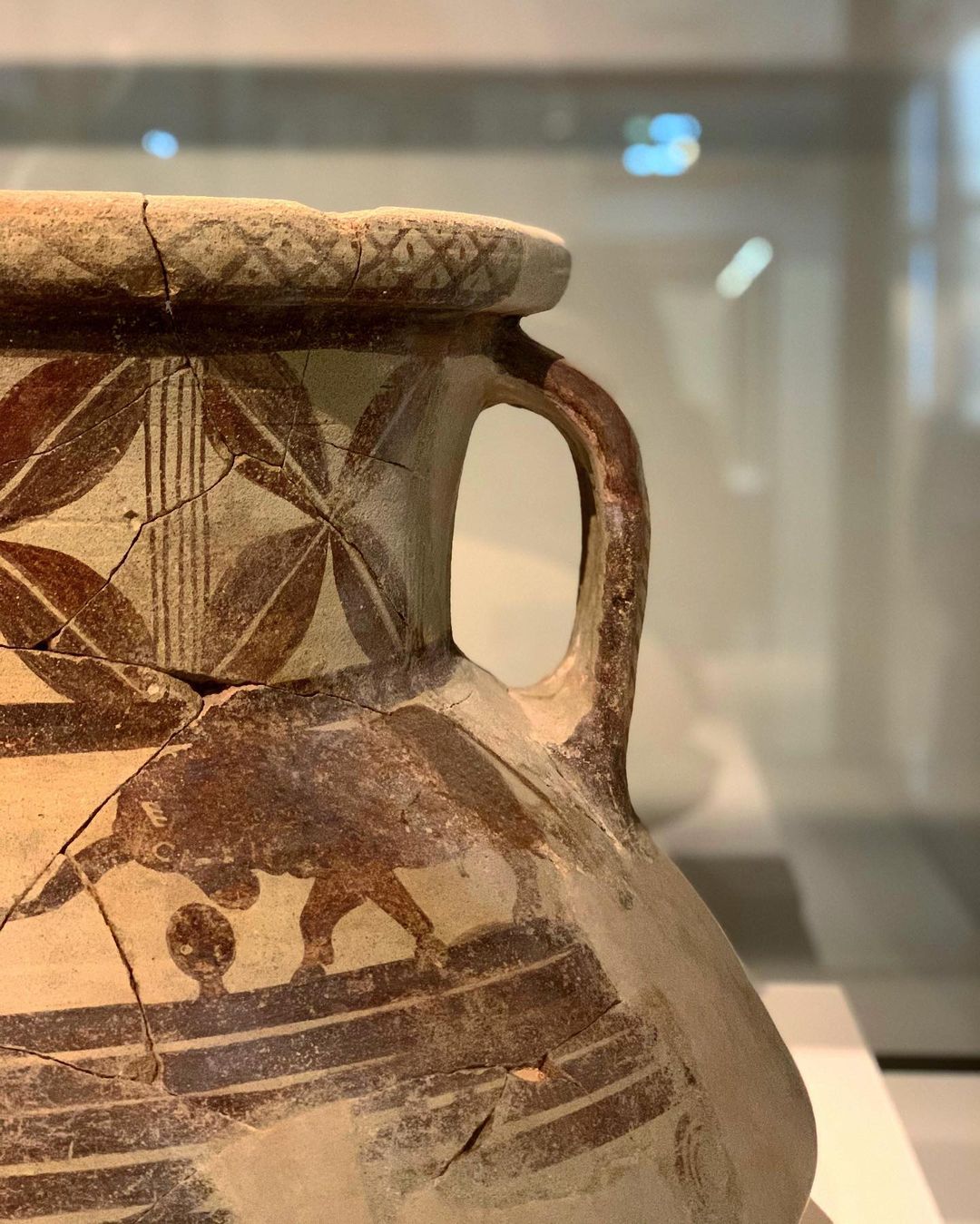
Large – size ceramic amphora, Cypro-Archaic period (7th c. B.C.) – at Limassol Archaeological Museum
For those interested in exploring the rich history of Limassol, a visit to the city’s archaeological museum is a must. Located just behind the Limassol Municipal Gardens, the museum boasts an impressive collection of antiquities dating back to the Neolithic Age up to the Roman period.
The museum is divided into three rooms, each with its unique collection. Room One showcases Neolithic tools and pottery excavated from Kourion, Amathus, and the city itself, spanning a period from 3000 BCE to 1300 CE. It’s a fascinating display of the island’s long and complex history.
Room Two is dedicated to artifacts from the Greco-Roman era and features a stunning bronze bull and delicate figurines. Room Three houses some of the most significant finds from the local area, including statues of the Egyptian god Bes and the goddess Artemis that were discovered at Amathus.
In addition to its indoor exhibits, the museum also boasts a beautiful garden complete with a sundial that was once owned by Lord Kitchener. The garden provides a serene setting in which visitors can relax and take in the exhibits.
The Limassol Archaeological Museum is open from Monday to Friday from 8 am to 4 pm and is closed on Saturdays and Sundays. A visit to the museum is an excellent way to gain insight into the rich cultural heritage of the region.
Conclusion
As you wrap up your visit to Limassol, make sure to download Framey, the app that lets you see all your friends’ holiday photos and plan your next trips.
With 15 top-rated attractions and things to do in Limassol, it’s clear that this Mediterranean gem has plenty to offer. From relaxing on the sandy beaches to exploring ancient ruins and strolling through picturesque villages, Limassol is the perfect destination for any traveler.
So, grab your camera, get ready to capture some amazing memories, and start planning your Limassol adventure today!
Read more
Top 20 Most Beautiful Places in Cyprus That Will Take Your Breath Away


